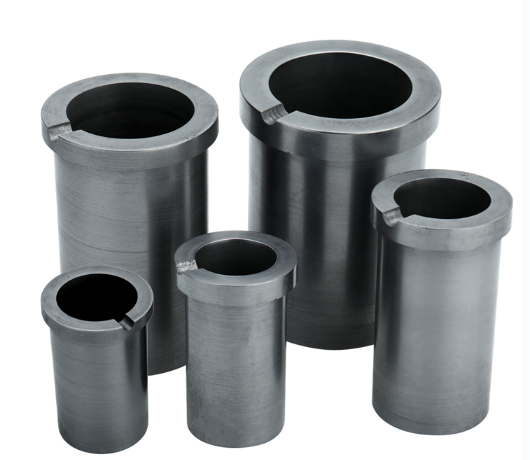Why do graphite crucibles crack? How to solve it?

The following is a detailed analysis of the causes of cracks:
1. After the crucible is used for a long time, the crucible wall presents longitudinal cracks, and the crucible wall at the crack is thin.
(cause analysis: the crucible is about to or has reached its service life, and the crucible wall will become thinner and can not bear too much external force.)
2. The crucible used for the first time (or close to the new one) shows cracks along the and runs through the bottom of the crucible.
(cause analysis: put the cooled crucible into a high-temperature hot fire, or heat the bottom of the crucible too quickly when the crucible is in the cooling state. Generally, the damage will be accompanied by glaze peeling.)
3. Longitudinal crack extending from the top edge of the crucible.
(cause analysis: it is formed by heating the crucible too fast, especially when the heating speed at the bottom and lower edge of the crucible is much faster than that at the top. The wedging operation at the top edge of the crucible is also simple to cause the damage. The unsuitable crucible or knocking on the upper edge will also cause hard damage and obvious damage at the top edge of the crucible.)
4. Longitudinal crack on the side of the crucible (the crack does not extend to the top or bottom of the crucible).
(cause analysis: it is usually formed by internal pressure. For example, when the cooled wedge-shaped cast material is placed laterally into the crucible, the wedge-shaped cast material will be damaged after thermal expansion.)
2、 Transverse crack of graphite crucible:
1. Close to the bottom of the crucible (may cause the bottom of the crucible to fall off) (cause analysis: it may be caused by the impact of hard objects, such as throwing the casting material into the crucible, or knocking the bottom with hard objects such as an iron bar. This kind of damage will also be caused by the large thermal expansion in other 1b).
2. About half the orientation of the crucible.
(cause analysis: the reason may be that the crucible is placed on the slag or unsuitable crucible base. When taking out the crucible, if the crucible clamping position is too close to the top and the force is too large, cracks will appear on the surface of the crucible at the lower part of the crucible clamp)
3. When SA series crucibles are used, there are transverse cracks at the lower part of the crucible nozzle.
(cause analysis: the crucible is not installed correctly. When installing a new crucible, if the refractory soil is tightly squeezed under the crucible nozzle, the stress points will converge at the crucible nozzle during the cooling and shortening of the crucible during operation, resulting in cracks).
Post time: Sep-16-2021
